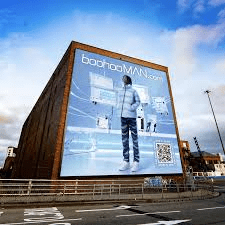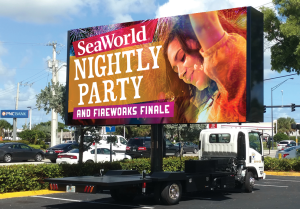The Billboard Advertising Atlanta Cost Isn’t Just Dollar Signs — It’s Data You Can’t Trust
In the heart of the Southeast, Atlanta’s skyline is littered with billboard ads—some digital, some static, all vying for the fleeting attention of drivers and commuters. On paper, these placements seem compelling. Average impressions? Millions per month. Placement costs? Ranging from $2,000 to $15,000 depending on size and location.
But if you’re a marketing professional, there’s a question you can’t afford to ignore:
Can you actually prove ROI on those billboard ads?
The billboard advertising Atlanta cost goes far beyond media spend. It’s the hidden cost of weak attribution, minimal engagement, and blind faith in visibility metrics that don’t convert.
That’s where Adzze’s approach diverges: local, trackable, in-hand advertising that shows up where attention lives — not where it drives by.
The Problem with Billboard Advertising in Atlanta’s Media Landscape
Let’s break it down. Most billboard ads in Atlanta follow the same playbook:
Target highways (I-75, I-85, I-285)
Maximize daily vehicle impressions
Use bold visuals and a short message
Hope that brand awareness turns into action
But in reality, billboard advertising in Atlanta suffers from four major flaws:
Visual Overload: Atlanta traffic is chaotic. With navigation apps, brake lights, and construction zones, your billboard is fighting against a dozen stimuli.
Speed of Transit: Drivers on I-285 average 55–75 mph. That’s a 2–3 second window of exposure. Even digital billboards that rotate content risk being missed entirely.
No Engagement Metrics: You’ll hear about “impressions,” but you won’t know how many actually read your message — let alone took action.
Attribution Gaps: Did someone visit your site after seeing your billboard? Or did they come from social? Or maybe they just searched your name?
The true cost of billboard advertising in Atlanta is that you pay for exposure but can’t track performance.
Why Attribution Is the Achilles’ Heel of Billboards
Billboards are inherently passive. Unlike digital ads or QR-enabled physical media, they don’t invite interaction. There’s no click. No tap. No scan.
And that’s a massive problem.
Marketing budgets in 2025 are driven by performance accountability. If you can’t prove your channel works, it gets cut.
Trying to attribute success to a billboard ad is like trying to measure brand lift in a thunderstorm — too many variables, not enough clarity.
The Billboard Advertising Atlanta Cost vs. In-Hand Media
Let’s compare two real-world options for a brand targeting local consumers in Atlanta:
Media Type |
Cost |
Targeting |
Attribution |
Engagement |
Billboard on I-75 |
$10,000/month |
Broad, uncontrolled traffic |
No direct tracking |
Passive, fleeting glance |
Adzze Coffee Sleeve Ads |
$5,000 for 50,000 sleeves |
Hyper-local (Atlanta cafés) |
QR codes, coupon redemptions |
Tactile, 15–20 min of exposure |






